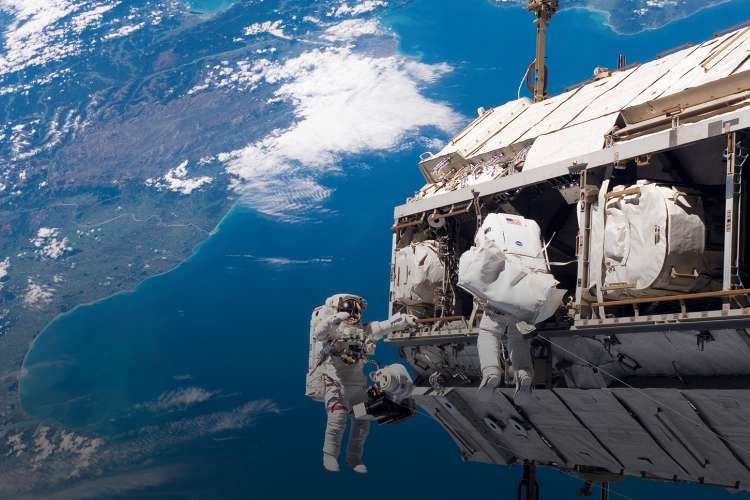Safe, routine human spaceflight can be achieved through continued innovation and sharing best practices across the community. The space community’s transition from government-led development and operations to commercial services can occur in parallel with knowledge transfer of the lessons learned and improvements to space mission reliability since the advent of space travel.
The Aerospace Corporation’s Space Safety Institute (SSI) facilitates this knowledge transfer from its long history of supporting human spaceflight, from the early days of “human-rating” the Titan missile in the Gemini Program to supporting the Safety and Mission Assurance team of the recent successful SpaceX Crew Dragon missions. SSI keeps pace with commercial innovation to ensure the mission success of national security, civil, and commercial space while factoring in unique human requirements.
Safety Standards and Best Practices
Space safety starts with system design practices, is improved with robust production and testing processes, and is realized through proper training and operations. NASA established the standards and best practices for human spaceflight over previous decades. SSI uses our deep understanding of why these standards were created to evaluate and balance the risks of any vehicle or operational customization.
Standards and regulations differ across various crewed spaceflight providers. As this sector of the space enterprise continues to grow, it is imperative that basic standards for crew safety are well understood and adapted to changing flight opportunities. SSI applies the expertise of Aerospace’s human exploration professionals to ensure a common understanding of human spaceflight safety standards as they are and as they evolve, providing independent assessments and recommendations as appropriate.
Independent Assessments
Aerospace has supported human spaceflight safety assessments for many decades, including:
- International Space Station (ISS) vehicle performance metrics
- Battery reconfiguration process of the ISS
- Russian NiCd batteries on the ISS
- Feasibility of ISS fiber-optic cable replacement with industry-standard fiber-optic cable
- Performance of the ISS commanding processes for payloads
- Ku-band space-to-ground transmitter-receiver-controller
- Joint Shuttle-ISS operational flight rules
- ISS shroud effects on extravehicular activity (EVA) communication
- Assembly, training, and resources required for EVA of the ISS
- ISS Ku-band and S-band capabilities
Research and Development
Aerospace regularly performs research on safety of spaceflight participants (SFPs) aboard suborbital reusable launch vehicles. This work, sponsored by the NASA Flight Opportunities Program, anticipates needed safety review procedures if the U.S. government sponsors human-tended research on commercial suborbital flights. Our research includes safety practices for NASA personnel aboard aircraft, orbital rockets, and platforms and medical recommendations for operationally critical flight crewmembers, as well as comparisons with other challenging environments, like deep-sea submersibles.
Aerospace also developed a prototype demand model for NASA Suborbital Safety which parametrically predicted the number of flight tests required for suborbital reusable launch vehicles when only conceptual vehicle descriptions are available. Model inputs used to predict flight tests include the number of crew and passengers, vehicle speed, flight profile, expendable or reusable, and build quantity. It also predicted catastrophic failure based on test program, vehicle speed, flight profile, number of vehicle designs, and other parameters.
No nation or company currently possesses known and verified capabilities to conduct in-space rescue of human spaceflight participants. SSI is working across U.S. research, government, and commercial sectors to explore and promote the development of this technology before a rescue situation arises.
Policy and Strategy
Crew safety is the paramount requirement on all human spaceflight missions, which have extended beyond those run by NASA to include myriad commercial and international exploration programs, each with their own safety requirements and environment. Humans are now traveling on regular suborbital flights for advanced technology demonstration, scientific research, and space tourism. For suborbital flights, the FAA is currently the regulatory and licensing entity; however, the NASA Commercial Crew Program is providing a technical safety assessment of these vehicles and their operation, with Aerospace's support.
Previous: Cybersecurity and Spectrum Next: Cislunar Space Safety
